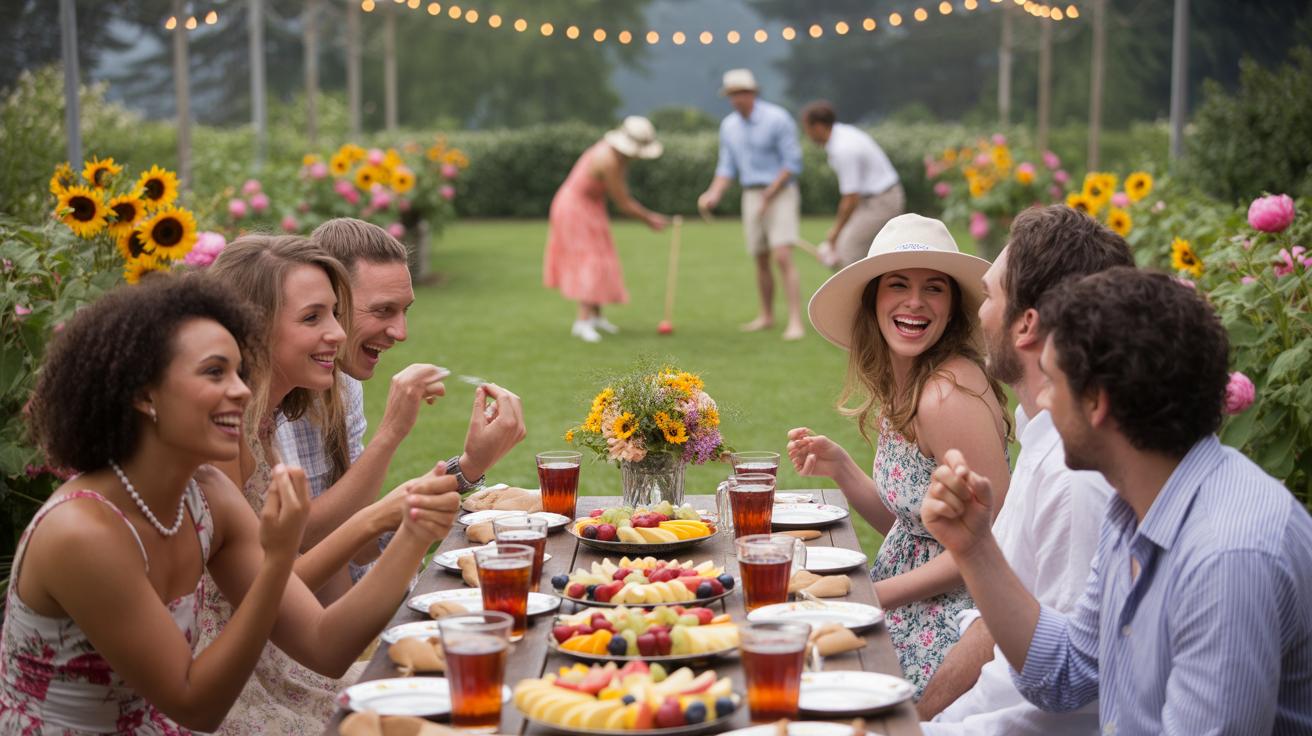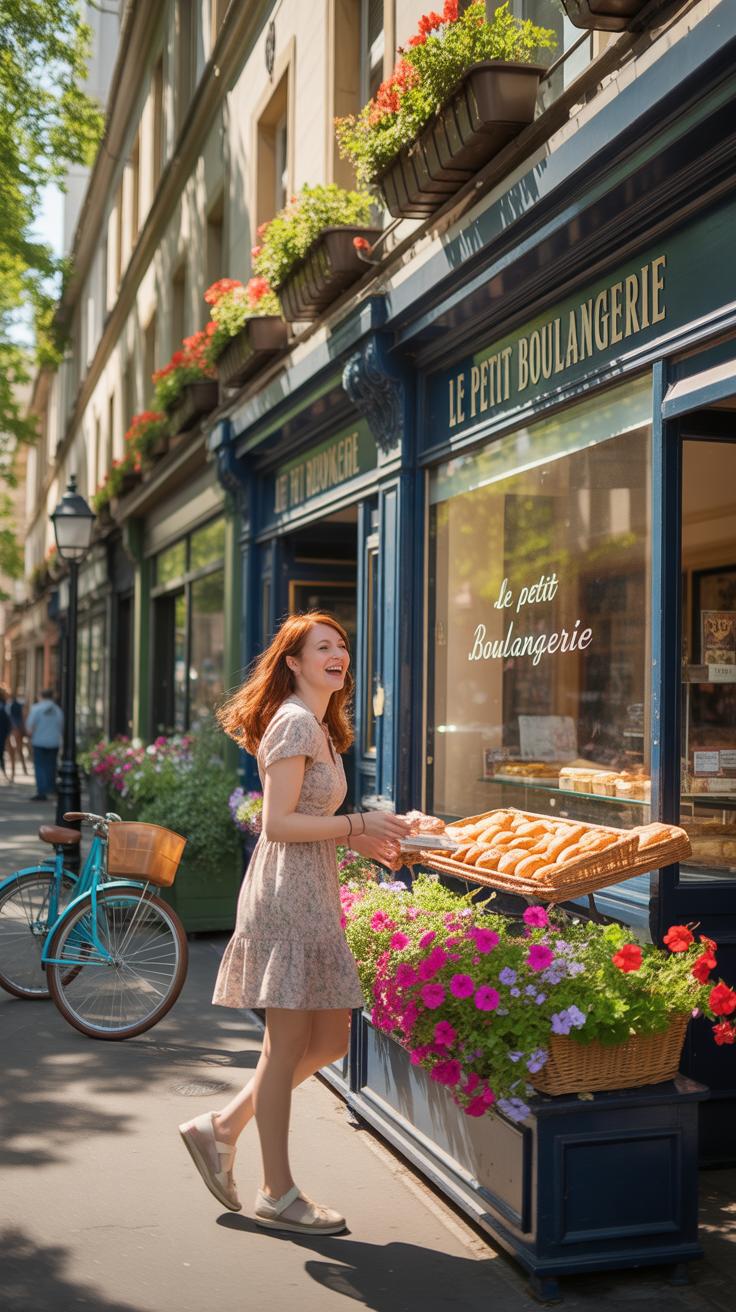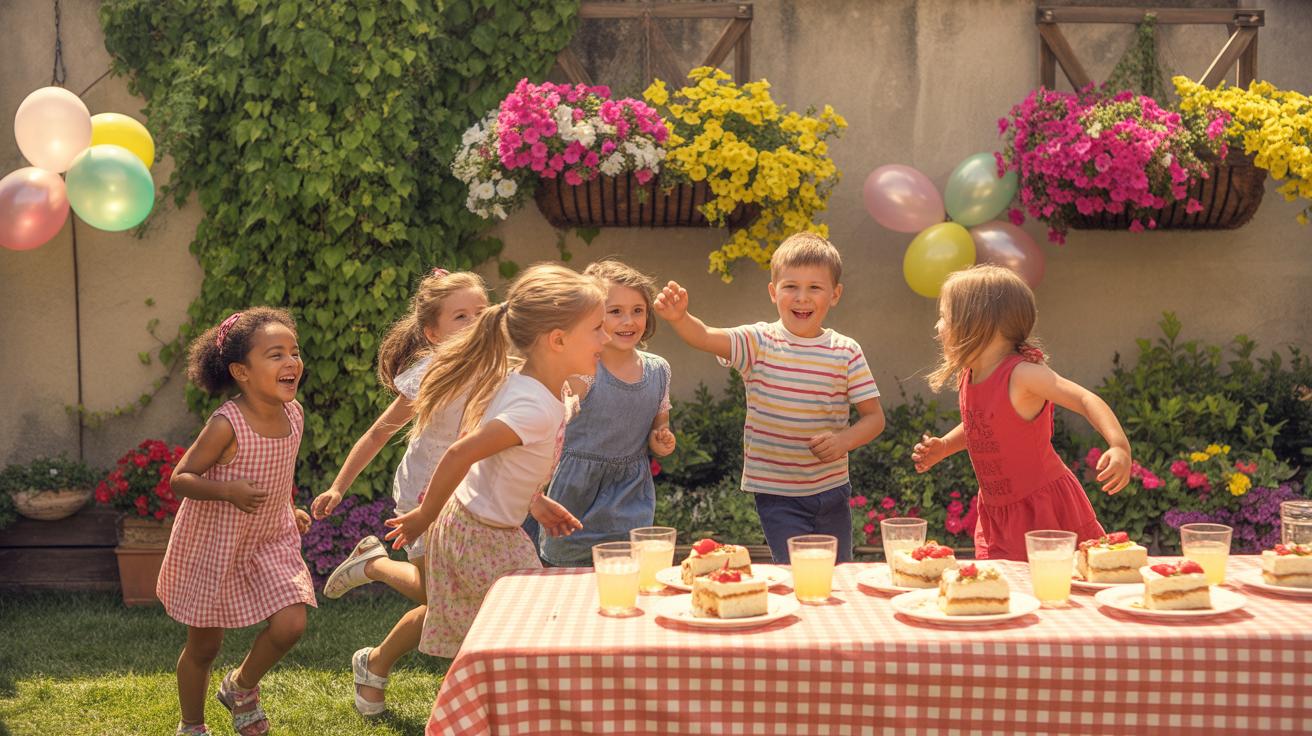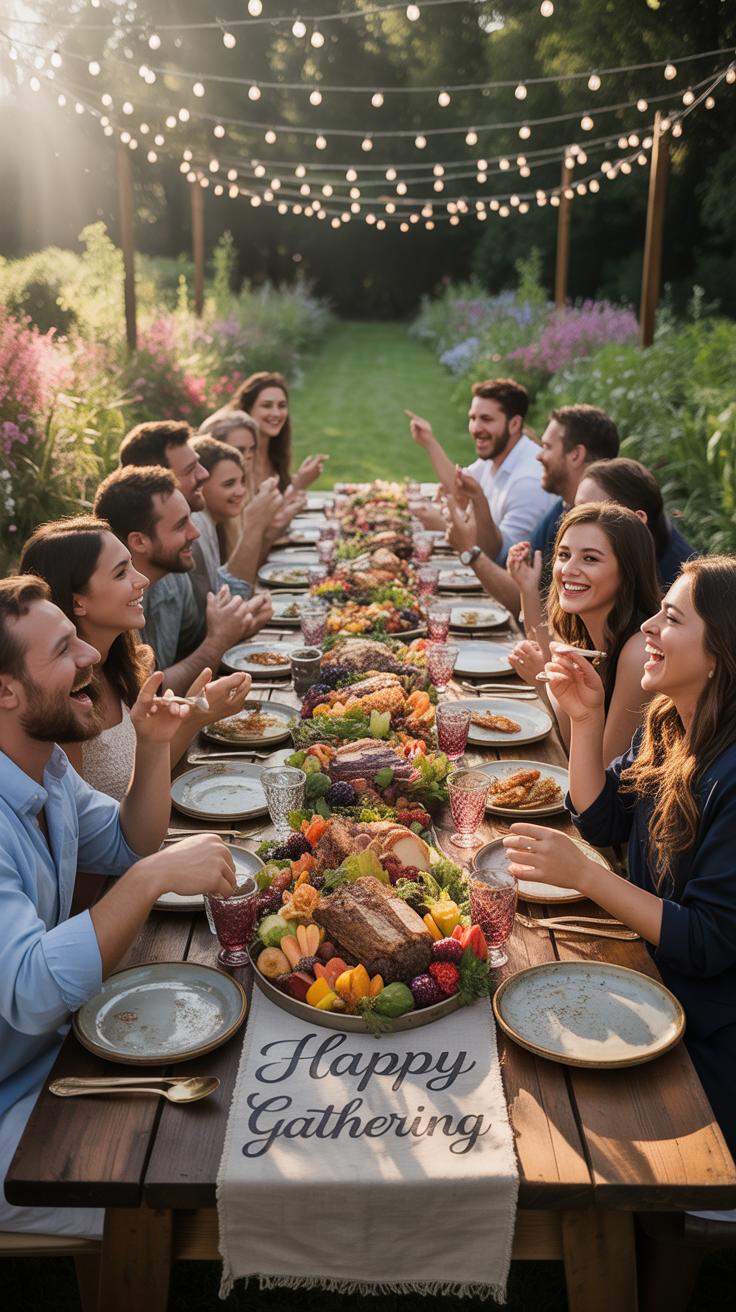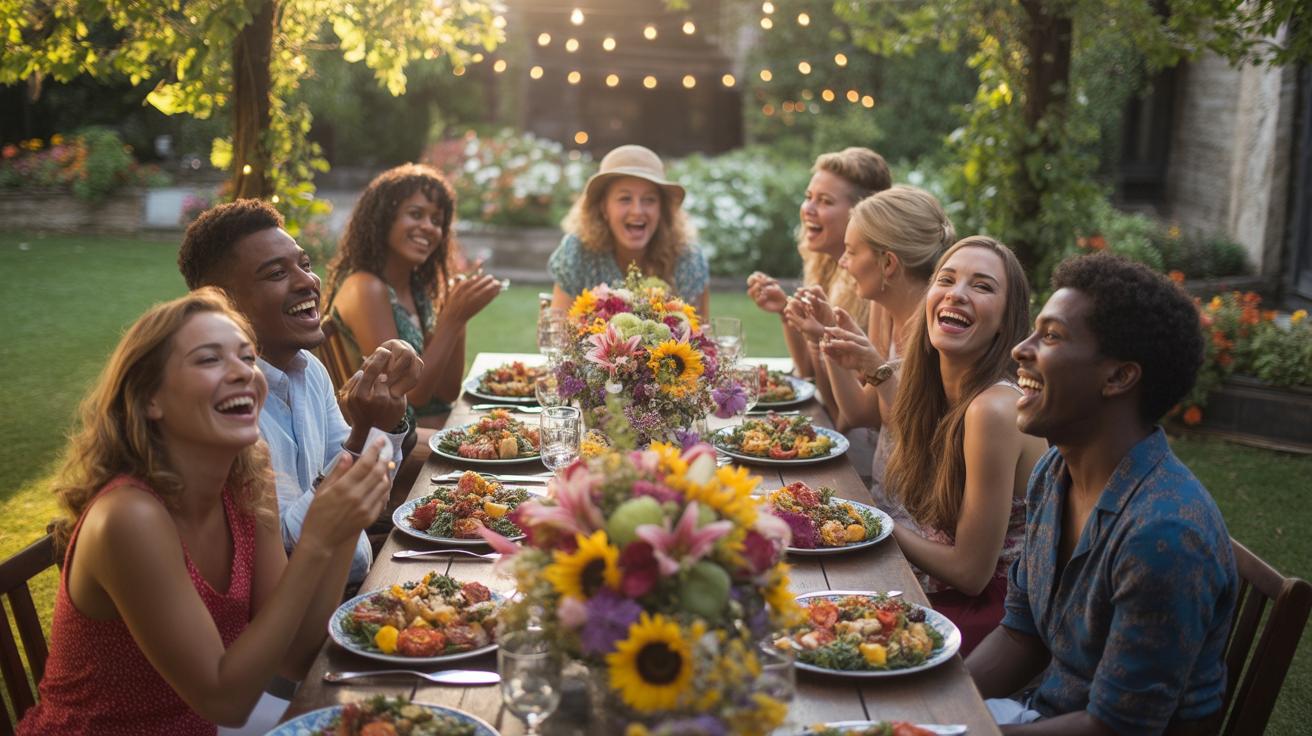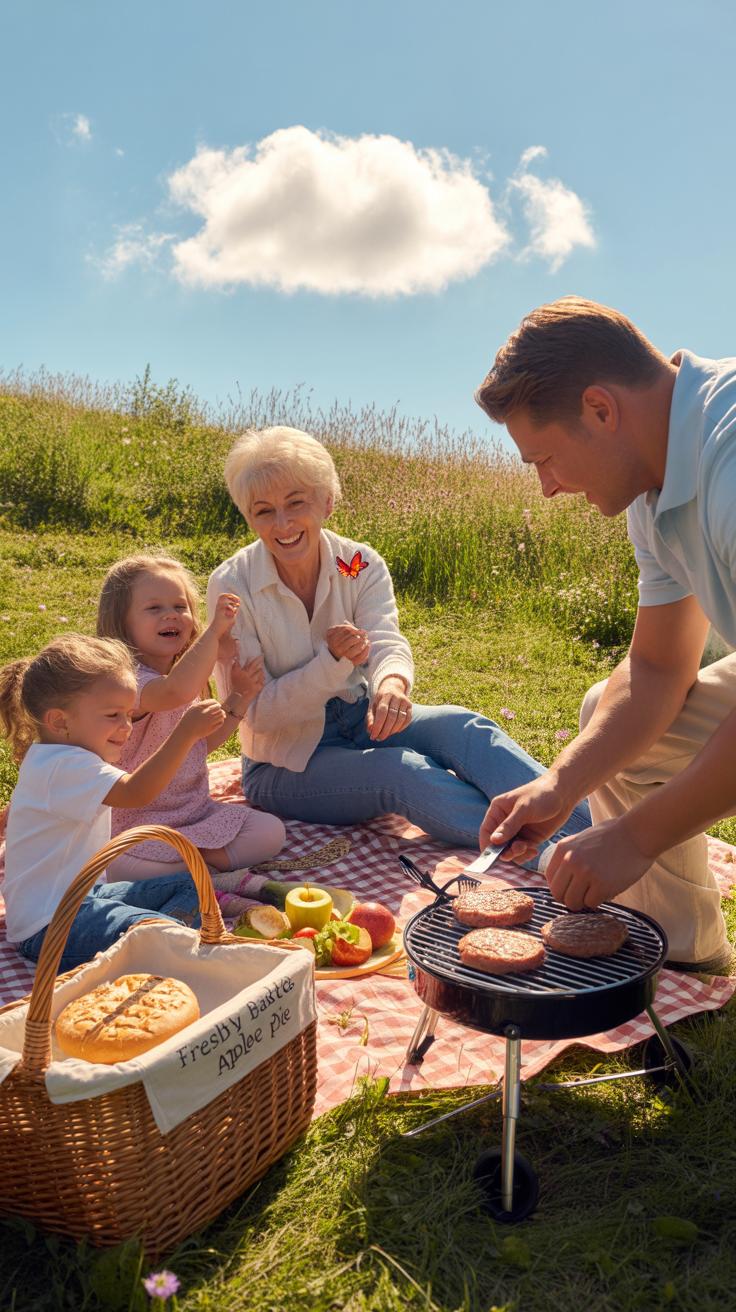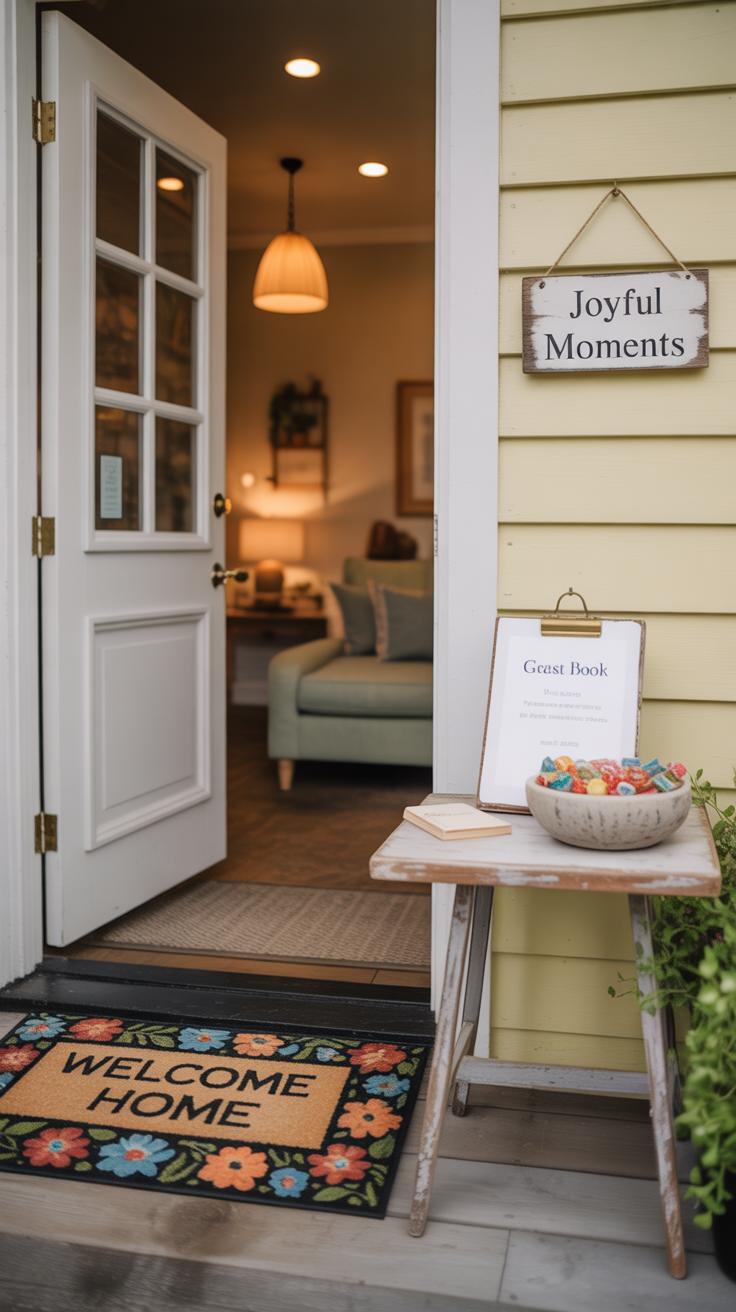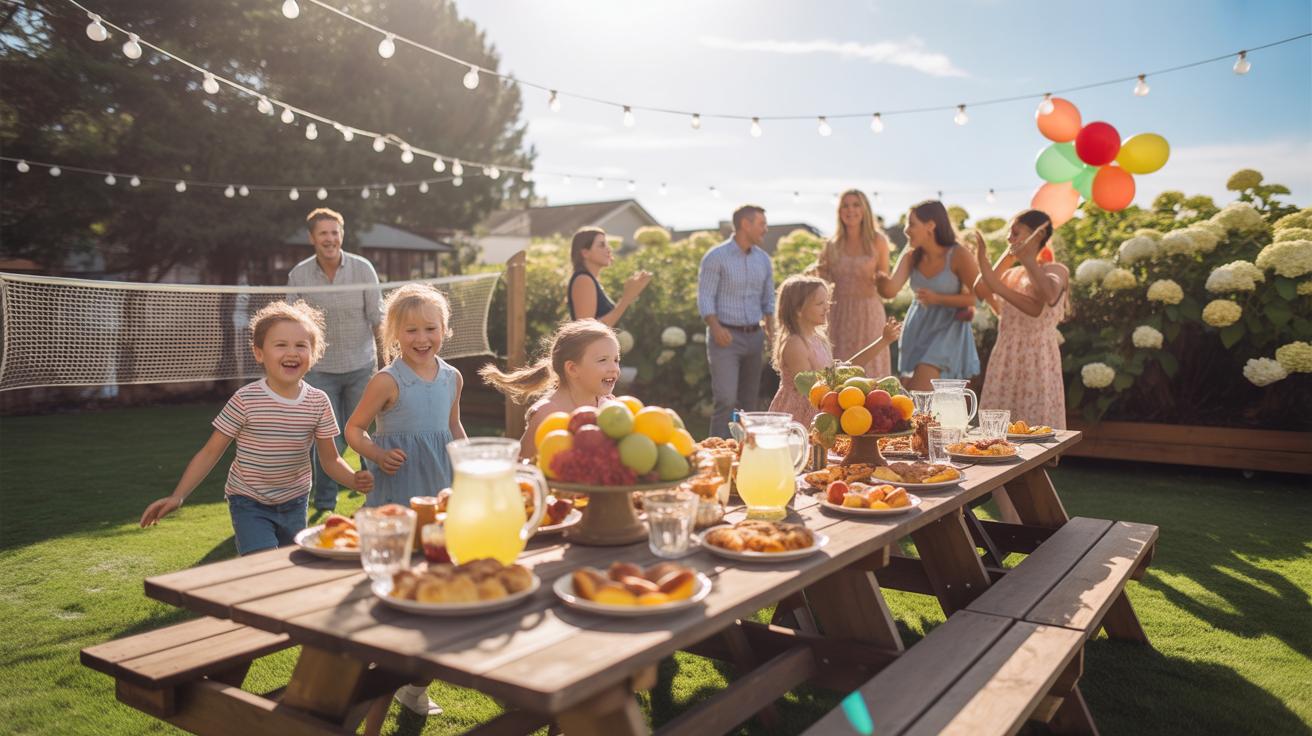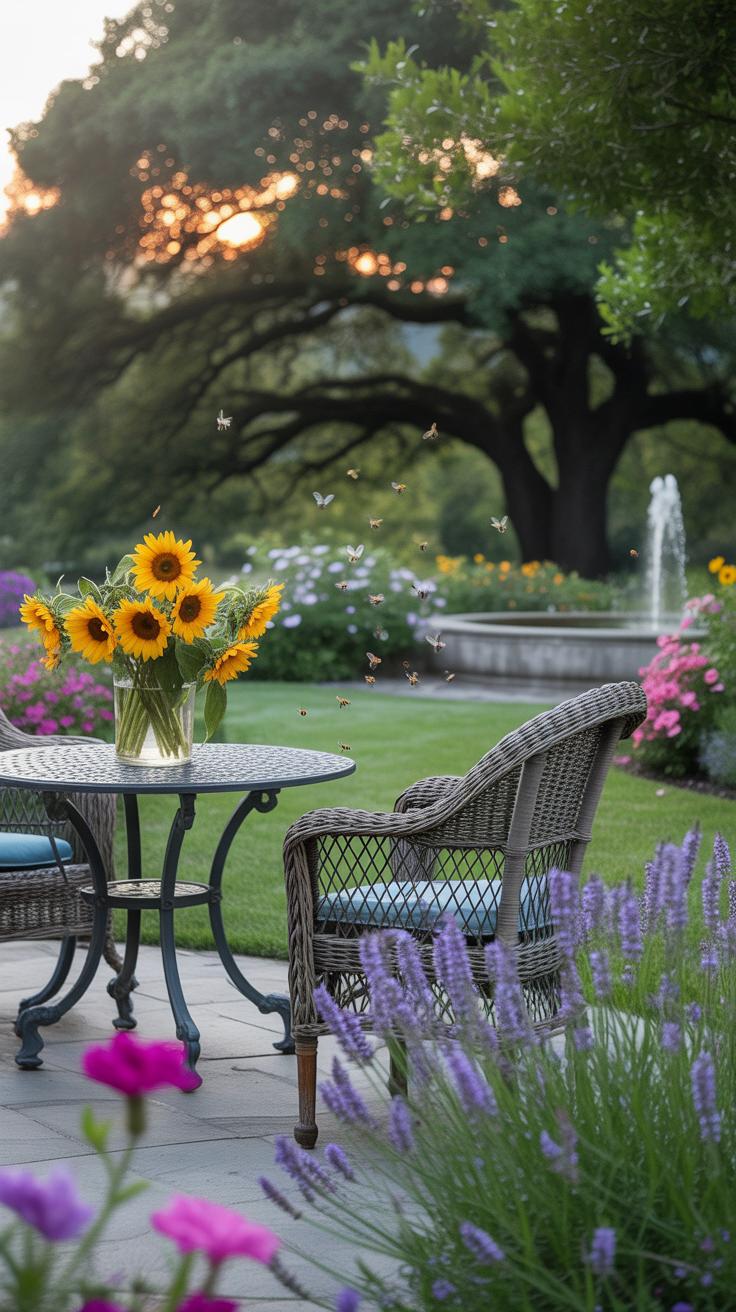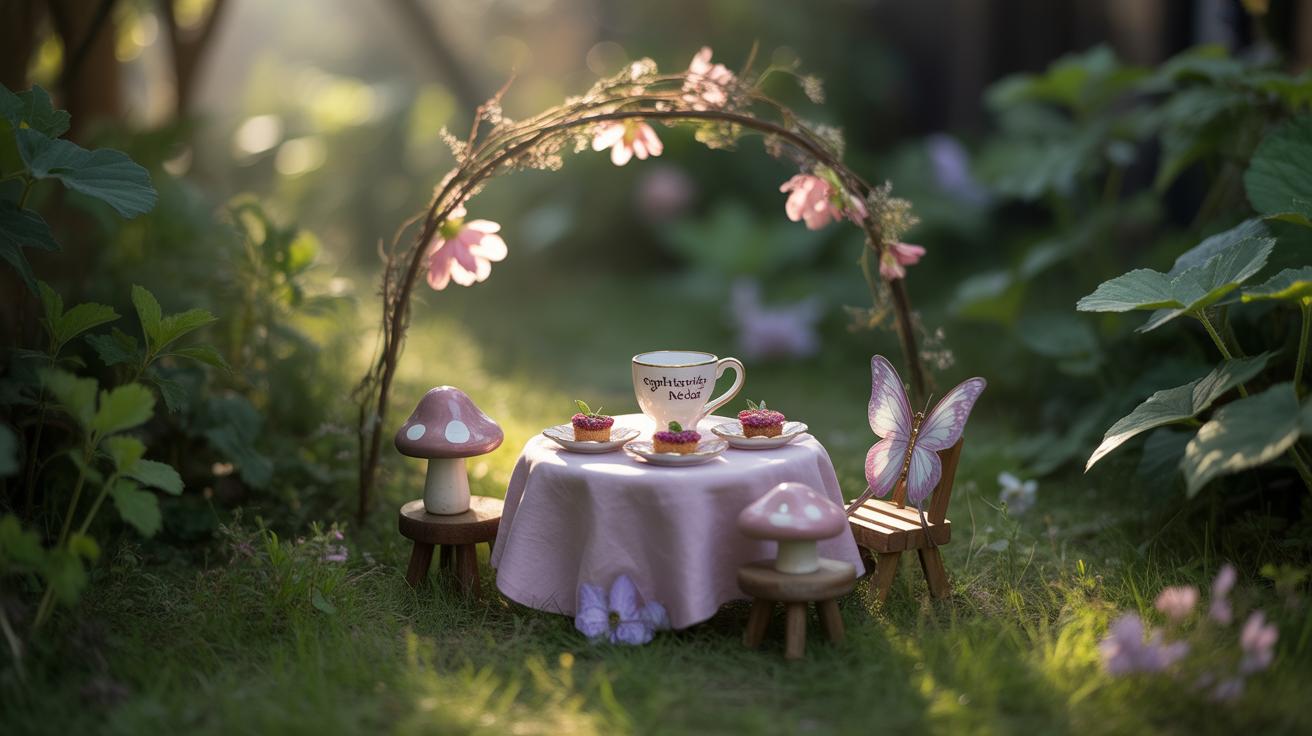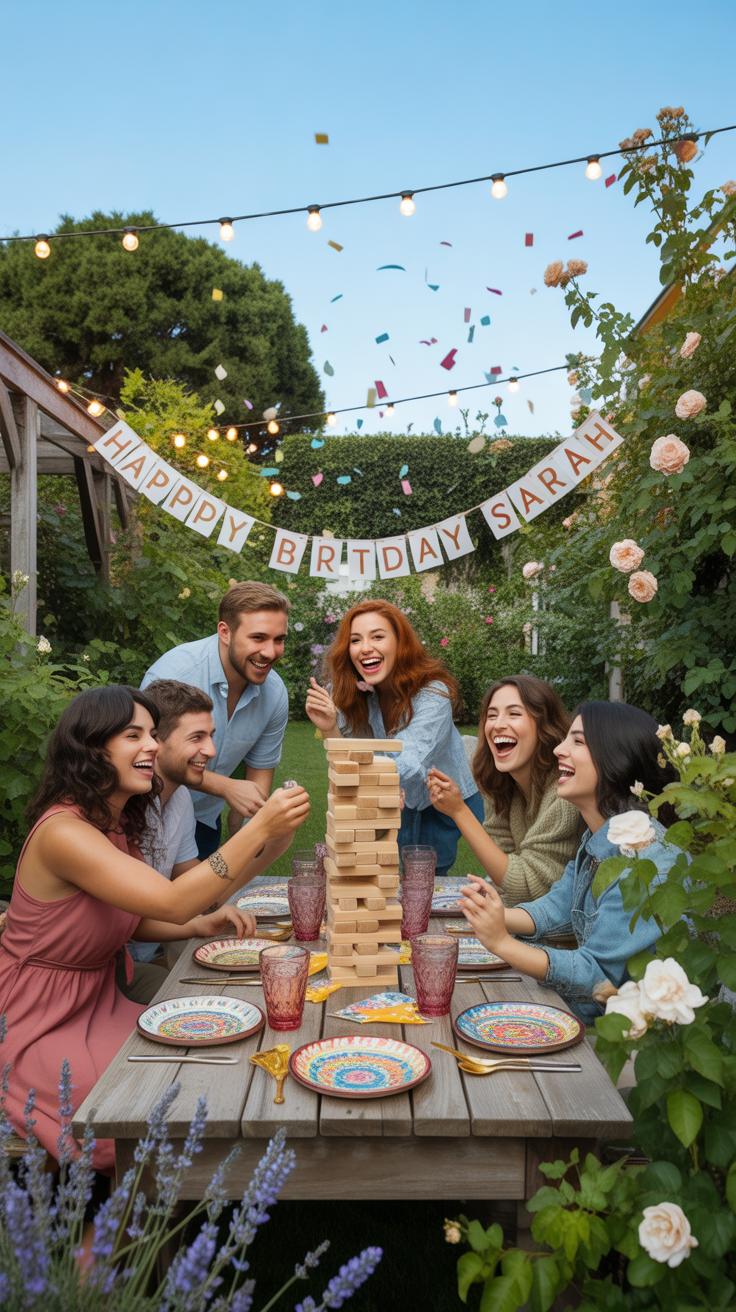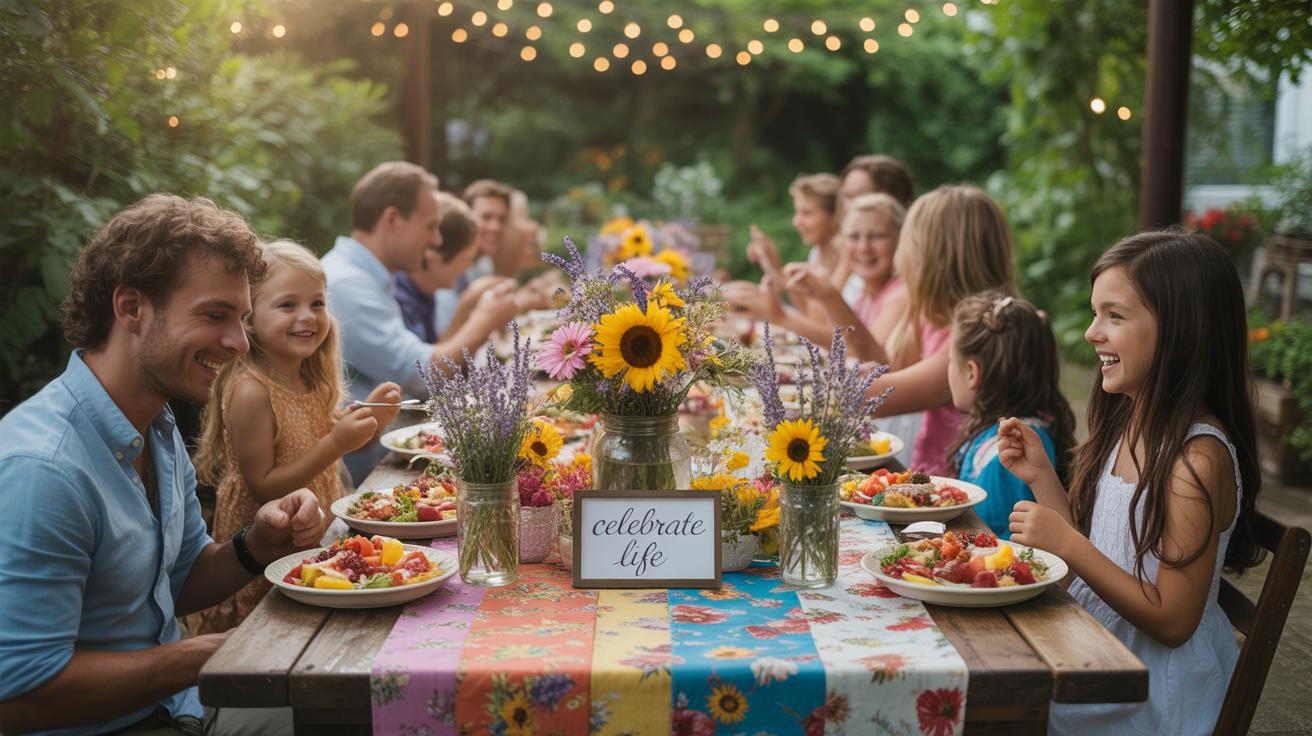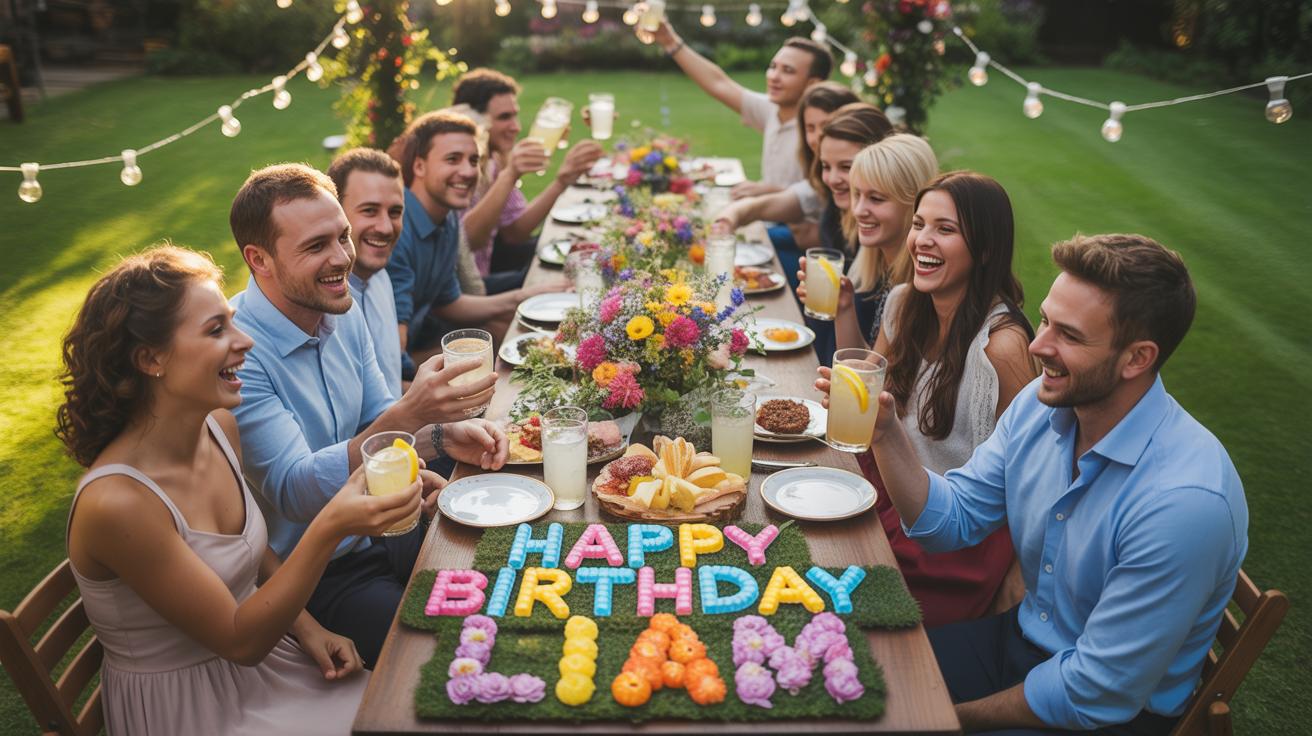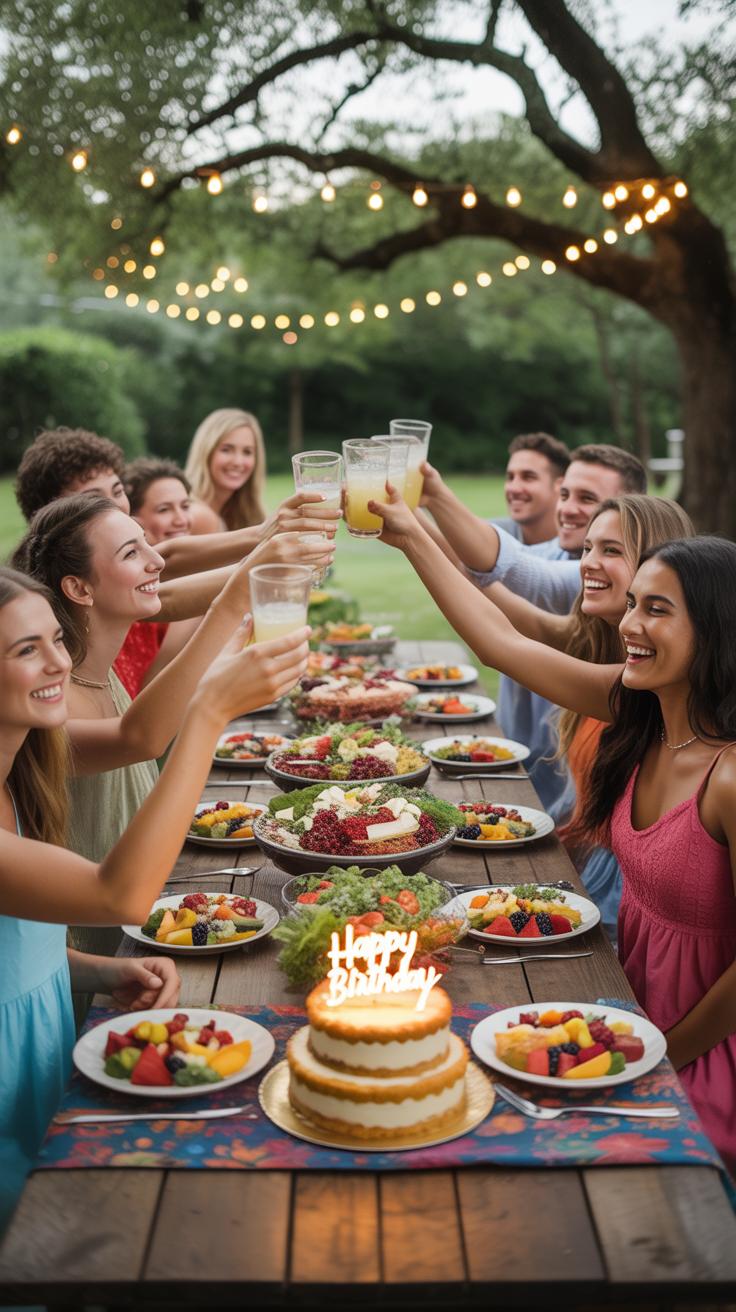Introduction
Summer garden parties offer a chance to enjoy nature and good company. They bring people outdoors to relax, chat, and have fun. You can create special memories with friends and family while surrounded by beautiful flowers and fresh air. Planning a summer garden party means thinking about activities everyone will enjoy and love.
In this article, you will find ideas to make your garden party lively. From planning tips to food, decorations, and games, we cover many ways to make your event a success. Whether you want a small gathering or a big celebration, these activities help you create a joyful summer garden party.
Choosing the Right Location
Picking the perfect spot in your garden for a summer party can feel trickier than it seems. You want enough space but not too much—otherwise, things might feel empty or disconnected. Start by thinking about how many guests you’ll have and what you want to do. Is there a flat area where you can set up tables and chairs? Uneven ground can make seating uncomfortable or tricky.
Sun and shade play a big role. A sunny location makes the party bright and cheerful but can get uncomfortably hot, especially midday. Shade offers relief. Maybe there’s a tree casting a nice shadow or a spot near the house always cooler in the afternoon. Often, you’ll want to mix both—so guests can choose what suits them best.
Accessibility is something you might overlook but shouldn’t. Can guests easily walk from the house to the garden spot? Are paths wide enough for everyone? Think about whether anyone might struggle with mobility. A location too far or awkwardly placed might discourage mingling and limit the flow of the gathering.
Once you’ve spotted potential areas, assess your garden’s size and features. Look for roomy flat patches where you can arrange seating comfortably. Are there open stretches where kids or adults can play games, or maybe dance a little? Avoid spots cluttered with plants or garden furniture, unless you want a cozy nook for smaller groups. Sometimes, moving a planter or garden bench clears just the right amount of room.
Creating comfort zones is surprisingly important. On a warm day, you don’t want everyone roasting in the sun or squeezing under one tiny parasol. Plan a balance—sunny spots for those who enjoy warmth, but also shaded areas made with umbrellas, tents, or even simple canopies. I find pop-up tents handy—they come down fast if the sun shifts or weather changes unexpectedly.
Don’t forget the subtle things: a cool breeze path, nearby power outlets if you want lights, or a flat area near a water source for easy refills or cleanup. When in doubt, try imagining your party in that spot. Walk through it at different times of the day to catch changes in light and shade. Sometimes, the perfect spot reveals itself quietly when you’re not eyeing it too closely.
Planning the Guest List
Figuring out how many people to invite is trickier than it seems. You might be tempted to include everyone, but that can quickly overwhelm the space. Think about the size of your garden—not just the total area, but where guests will gather. If your garden includes narrow paths or delicate flowerbeds, those limit how many people can mingle comfortably. It’s not just about fitting bodies; it’s about making sure guests can move around without feeling cramped or awkward.
Matching guest numbers to your garden size helps avoid that stuffy feeling. For example, if your space fits about twenty people comfortably while still leaving room for activities and seating, it’s probably wise not to stretch beyond that. Crowding makes conversations harder and less enjoyable. Still, it might also depend on the event style—are you aiming for relaxed loungers or a lively mingling crowd? That changes things.
Who you invite matters just as much as how many. Consider mixing personalities and interests carefully. If too many quiet folks show up and the activities are loud and active, some may feel left out or uneasy. On the other hand, too many extroverts might dominate conversations or games. Try to balance friends who appreciate gardening or outdoor crafts with those who enjoy casual chats or light games. I’ve noticed planning this mix ahead can prevent awkward silences or cliques.
You might ask yourself: will everyone get along well? What activities truly engage each guest? Keep those questions in mind. Sometimes, fewer guests with shared interests create a better vibe than a bigger group mismatched in expectations.
Creating a Theme
Picking a simple theme for your garden party can really pull everything together, making the planning feel less scattered. When you choose something straightforward—like a color palette or a particular style—you give yourself a clear road map. Suddenly, the decorations, table settings, even lighting, don’t feel random or overwhelming. It’s easier to decide what matches and what doesn’t.
Some easy themes that work well include floral, vintage, and tropical. For a floral theme, you might lean into soft pinks, greens, and plenty of fresh flowers scattered around. Vintage vibes call for lace tablecloths, antique-style glassware, and muted colors that hint at nostalgia. Tropical? Think bright greens, bold patterns, and maybe even some pineapples or palms to brighten the scene.
Applying your chosen theme is mostly about little details. For example, if you pick floral, use matching napkins, fresh blooms as centerpieces, and even string lights woven with greenery. Vintage themes might benefit from candles in old jars and delicate place cards. With tropical, colorful lanterns and vibrant table runners work well to echo that lively feel. It’s surprising how these small touches can shift the whole mood of your party—have you noticed that? They quietly connect the dots without feeling forced.
Inviting and Greeting Guests
Crafting Invitations
When you send out invitations for your summer garden party, clarity matters more than you might guess. Be sure to include the date and time—people appreciate when you’re precise. It’s easy to overlook, but the location should be clear, especially if your garden is tucked away or requires directions. Think about adding a dress code, especially if your party has a theme or if guests might be outdoors during warm weather. Simple phrases like “casual summer attire” or “light and bright colors” can help set expectations without sounding too formal.
Don’t forget to include RSVP details. It helps you know who’s coming, but also shows you care about planning ahead. This could be as straightforward as a phone number or email, maybe even a deadline for replies. Sometimes people ignore RSVPs but try to make it easy and polite—they respond more often if it feels effortless.
Welcoming Your Guests
First impressions set the mood, so greet your guests with a warm smile as they arrive. That might sound obvious, but you’d be surprised how much a friendly welcome puts people at ease. Perhaps offer a small refreshment or a light compliment—that can break the ice quickly. You don’t have to do anything grand, simple gestures often speak louder.
If you know some guests don’t know many others, take a moment for introductions or suggest a brief activity that encourages mingling. You might even have a small welcome table with name tags or a fun note about the theme; those little things help people feel included. It’s probably true that no two guests react the same way, so try to keep things light and observe who might need a bit more encouragement to settle in.
Selecting Foods and Drinks
When planning what to serve at your summer garden party, think simple and fresh. You want food that doesn’t demand utensils or complicated setups—something guests can enjoy easily, moving around or sitting on the grass without fuss. Finger foods tend to work best, especially those that hold up well in warm weather.
Some easy ideas you might try include:
- Mini sandwiches with light fillings like cucumber and cream cheese or smoked salmon.
- Skewers with cherry tomatoes, mozzarella balls, and basil—fresh and colorful.
- Chilled salads in small cups, perhaps a fruity quinoa mix or a classic Greek salad.
- Crudités with a variety of dips, offering something for every taste.
For drinks, go for refreshing options that keep guests cool without overdoing it. Iced tea, with a hint of lemon or peach, often surprises people with how satisfying it is. Lemonade is a classic—it pairs well with just about everything, and you can sweeten it just right to avoid being cloying. If you’re thinking about cocktails, light ones like spritzers or a simple mojito tend to be crowd-pleasers without feeling heavy under the sun.
Keep in mind the guests’ preferences, too. It’s easy to forget but offering a mix of alcoholic and non-alcoholic drinks lets everyone find something they like. Also, avoid foods and drinks that spoil quickly. Nobody wants melted cheese or soggy bread halfway through the party. From my experience, simple dishes not only ease preparation but encourage guests to sample more, creating a relaxed, social vibe perfectly suited for a garden setting.
Decorating Your Garden
Using Flowers and Plants
You don’t need to buy expensive decorations to make your garden look inviting. Sometimes, just using what’s already there can do the trick. Think about gathering fresh flowers from your garden or nearby fields. Wildflowers in simple glass jars or tin cans can add a casual charm. Arranging greenery like ferns or ivy along tables or around seating areas brings in that natural freshness, which no fake decoration can quite match.
Try mixing tall blooms with low-lying plants for some depth. You might place vases of daisies or lavender on your dining table while tying small bunches of herbs, like rosemary or thyme, to chair backs or napkin rings. It’s not only decorative but subtly scents the air—a nice detail people might barely notice but will appreciate. You don’t have to overdo it—sometimes a few well-placed stems create more impact than a whole bunch.
Adding Lights and Accessories
Lighting can really change the mood as daylight fades. String lights draped overhead or wrapped loosely around tree branches give a soft, warm glow. If you’re feeling a bit more adventurous, adding lanterns with candles or solar lights can brighten up pathways or corners. They don’t have to be perfect; uneven spacing or mixing different sizes adds a kind of effortless vibe that might feel more welcoming than over-planned setups.
Color plays a role too—using bright tableware like mismatched plates or colorful drink glasses can lift the feel of the space. Paper napkins in cheerful patterns or simple fabric table runners also add a nice touch without much fuss. It’s surprising how small accents can make people feel like the event is special, even if the rest is fairly simple.
Planning Garden Party Games
Setting up garden party games can be one of the best ways to get guests mingling and laughing. You don’t need anything complicated—sometimes simple games work best, especially outdoors where space and sunshine invite movement. Think about activities that everyone, from kids to grandparents, can jump into without too much fuss. Maybe you’ll find that a bit of friendly competition or a silly challenge breaks the ice better than anything else.
Classic Outdoor Games
Some games just belong in a garden party—it’s almost expected. Sack races, for example, bring a burst of energy and lots of laughs. They don’t need much prep, just a few sturdy sacks and a clear start and finish. Croquet is another good option, a bit calmer but still engaging for those who prefer a slower pace. It’s interesting how competitive even the most laid-back players can get once they start.
Ring toss is a classic that works well on uneven grass since it doesn’t rely on perfect footing. Plus, it’s easy to explain and quick to play, so guests can jump in spontaneously. You might be surprised how these simple games can spark longer conversations. It’s not always about winning but about sharing a good moment outdoors.
Interactive Group Activities
Group games can really change the garden’s energy. Think about organizing something like a scavenger hunt—it encourages people to team up and explore the space. You can keep clues light and easy, or a bit cryptic if your group enjoys a challenge. It’s fun to see teams strategize and sometimes get hilariously lost in the process.
Another option is a storytelling circle, where each person adds a line to a shared story. It sounds old-fashioned, but it can get unexpectedly funny and creative. You don’t need any props—just a willingness to listen and contribute. Plus, it pulls guests into a shared experience that lasts beyond the game itself.
Perhaps the best garden party games mix movement, teamwork, and casual competition without making anyone feel forced to participate. Do you want guests to remember the party for the games or the company? Ideally, a little bit of both.
Playing Music and Entertainment
Picking the right music can really set the tone for your garden party. You might want to start with something light and easy on the ears, something that blends well with the outdoor vibe without overwhelming conversation. Acoustic tunes often work well—imagine gentle guitar or soft piano creating a relaxed atmosphere. Jazz offers another great option, especially smooth or classic jazz that feels casual but refined. Light pop can also keep the energy up without being too intense, striking a nice balance between upbeat and unobtrusive.
Now, when it comes to live versus recorded music, each has its quirks. Live performers, like a small acoustic band or a soloist, bring this spontaneous energy that’s hard to replicate. They can interact with guests, take requests, and adjust their pace to the mood—an immediate connection that feels personal. Of course, live musicians tend to be pricier and require more planning.
Recorded music, on the other hand, is more flexible and budget-friendly. You can prepare playlists tailored for different parts of your event—chill tunes for early afternoon and something livelier as the party picks up. The downside? It lacks that human element and there’s a risk of awkward gaps or a playlist that doesn’t quite jive with the moment.
Sometimes, a mix of both works best. Maybe start with a live acoustic set, then let the playlist take over. It’s all about what fits your style and the kind of experience you want to create. What vibe are you aiming for? That question should guide your choice, more than anything else.
Wrapping Up Your Party
The end of a garden party can feel a bit awkward sometimes—guests may linger or seem unsure when it’s time to leave. You might notice that the atmosphere shifts as the sun sets or the music winds down. To keep things smooth, try giving gentle signals, like turning down the music gradually or bringing out a final round of drinks or snacks. It doesn’t have to be rushed, but pacing helps everyone get ready to say goodbye without feeling suddenly pushed out.
Thanking Your Guests
Simple gestures go a long way when thanking guests. A few kind words as they head out can make them feel appreciated—and really, it’s often what people remember most. You could offer small gift bags with a homemade treat or a little plant cutting from your garden. These moments, even brief, create a warm ending and a nice surprise that sticks with your guests beyond the day.
Cleaning Up Efficiently
Cleaning up right after the party doesn’t need to be a chore that drags on. If possible, gather a few helpers early on or ask close friends if they can lend a hand before heading out. Having trash bags and containers handy during the event will save you from picking up scattered items later. Focus first on clearing food and leftover drinks to avoid attracting critters overnight. Then, put away decorations and fold chairs while the night is still fresh. Your garden will thank you, and you won’t dread the morning after.
Conclusions
Summer garden parties combine fresh air, nature, and social time. Careful planning makes these events easy to organize and full of fun. You can select games, food, and decorations that fit your space and guests, making your party memorable.
Remember, the best garden parties focus on connection and joy. Use these ideas to inspire your event and bring smiles to your guests. Your summer garden party can become a cherished tradition filled with laughter and happiness.

